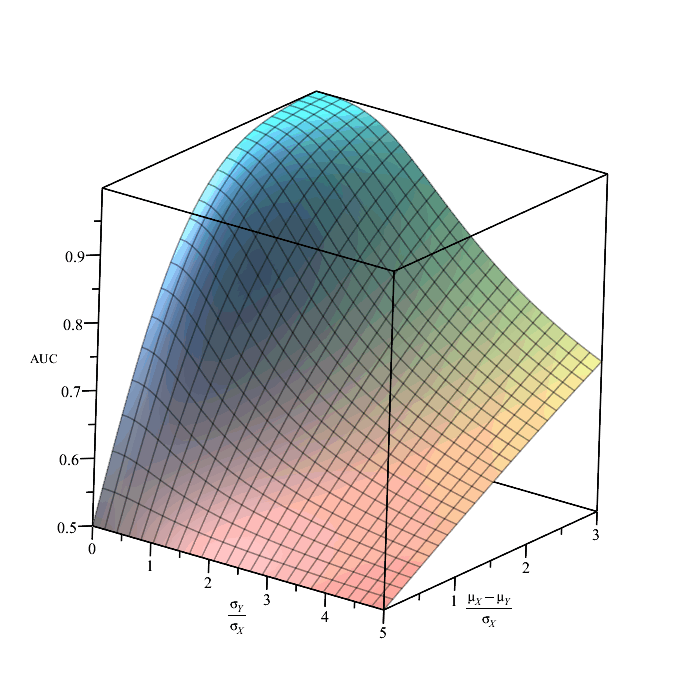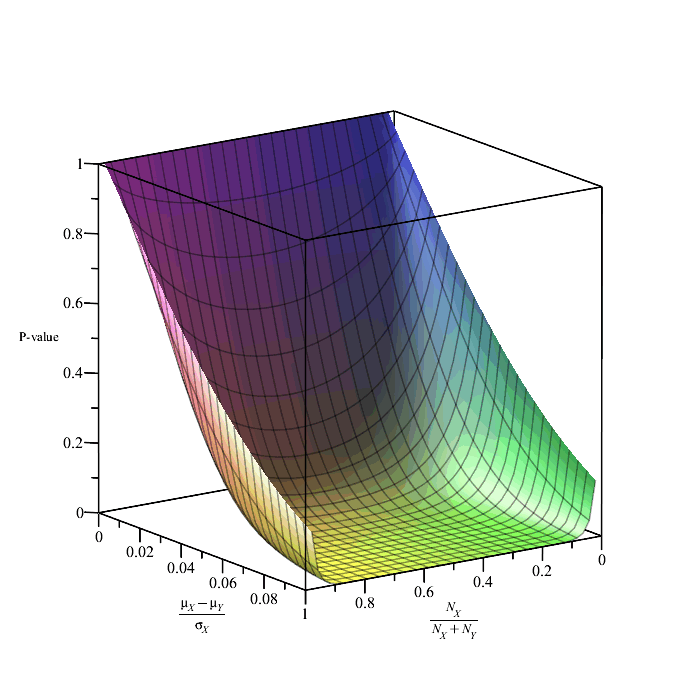The Binormal ROC Model and the U-Statistic
Recall that the CDF of a normal distribution is
![]()
![]()
| (1.1) |
![]()
 |
![]()
| (1.2) |
![]()
 |
Assuming that  and that
and that  we can compute the ROC curve for two normal distributions as follows:
we can compute the ROC curve for two normal distributions as follows:
![]()
| (1.3) |

 |
The area under the ROC curve (AUC) can be computed as follows:
![]()
| (1.4) |

 |
The U-statistic for the binormal model with sample sizes ![]() and
and ![]() can be computed from the AUC as follows:
can be computed from the AUC as follows:
![]()
| (1.5) |



